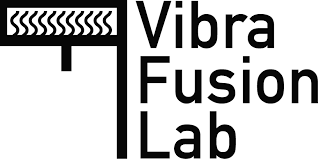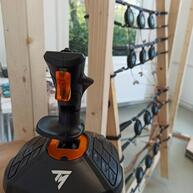A Collaborative Project with The Other Abilities, Amsterdam and Centre[3] for Artistic and Social Practice, Hamilton, Ontario
The main focus of the research period of this project will be to question perspectives of sound in space, aimed at allowing audience participants to use their body to literally feel sound as they navigate in a room. To guide our research, we will address the following central questions:
- How can we translate the experience of hearing into a physical experience of a room?
- How do the acoustics of a space influence the dynamics of sound in terms of tactility?
- What possibilities can technology give us for understanding complex sound/vibration (voice, noise, melody, harmony, source, spatialization, interference) through our body?
The idea for this multinational collaboration is to explore formative and theoretical questions of accessibility, and inclusivity through sensory translation in the presentation and creation of art. During this research period our team will: revisit past research, develop and apply new concepts, carry out testing, design prototypes, create small personal works for experimentation and demonstration, present in the form of a public laboratory, organize workshops, analyze results, archive and publicize our process, prepare an exhibition for potential presentation in the Netherlands, draft a plan for a future large-scale interactive tactile art-installation, and write a final paper.
Netherlands-based participants: Adi Hollander, Eva Fotiadi, Andreas Tegnander, Ildiko Horvath, Alina Ozerova, Claudio F Baroni, Mark Ijerzman, Michele Abolaffio
Canadian-based participants: David Bobier, Jim Ruxton, Jenelle Rouse, ASL interpreter Debbie Parliament
US-based participants: Rebecca Kleinberger, Akito van Troyer
Israel-based participants: Mor Efrati, Yonatan Cohen
In partnership with other abilities here is VibraFusionLab's contribution to the project 'What Do I Hear? Designed and built by Jim Ruxton and David Bobier. And yes that is a joystick and yes it controls the 12 channel wall of transducers.
Spot on Tactile Wall prototype! It engages with the idea of activating a vertical surface that the body can lean against, a tool conceived by #whatdoihear_team members in Canada - @vibrafusionlab
This tactile wall can be easily moved or reconfigured. It uses twelve transducers and twelve audio channels. It is controlled using a joystick drawing and a Linux computer running a Pure Data patch.
By moving the joystick a participant can “outline” a vibration pattern in the wall. The pattern can be saved and replayed.
Our development goal is to make it feel comfortable for people, and be adjustable to different heights of users.
Spot on Tactile Wall prototype! It engages with the idea of activating a vertical surface that the body can lean against, a tool conceived by #whatdoihear_team members in Canada - @vibrafusionlab
This tactile wall can be easily moved or reconfigured. It uses twelve transducers and twelve audio channels. It is controlled using a joystick drawing and a Linux computer running a Pure Data patch.
By moving the joystick a participant can “outline” a vibration pattern in the wall. The pattern can be saved and replayed.
Our development goal is to make it feel comfortable for people, and be adjustable to different heights of users.


